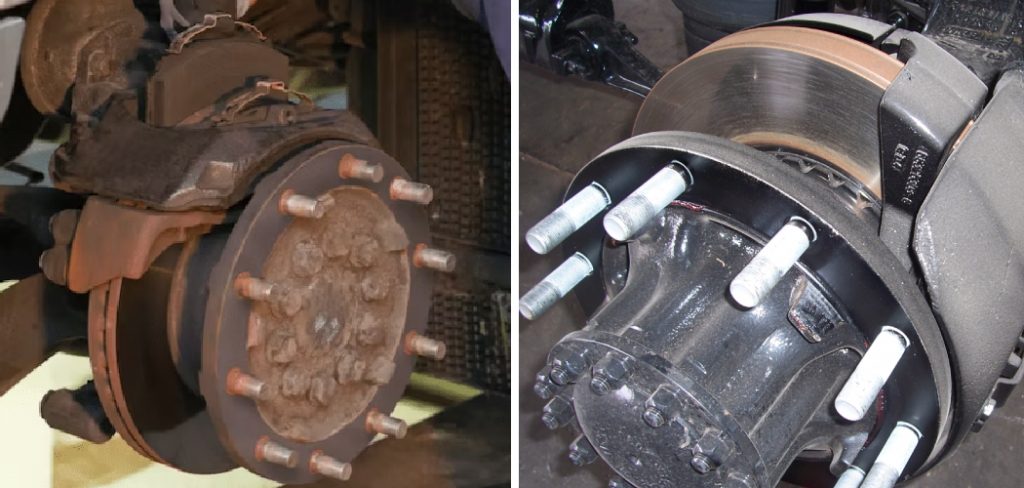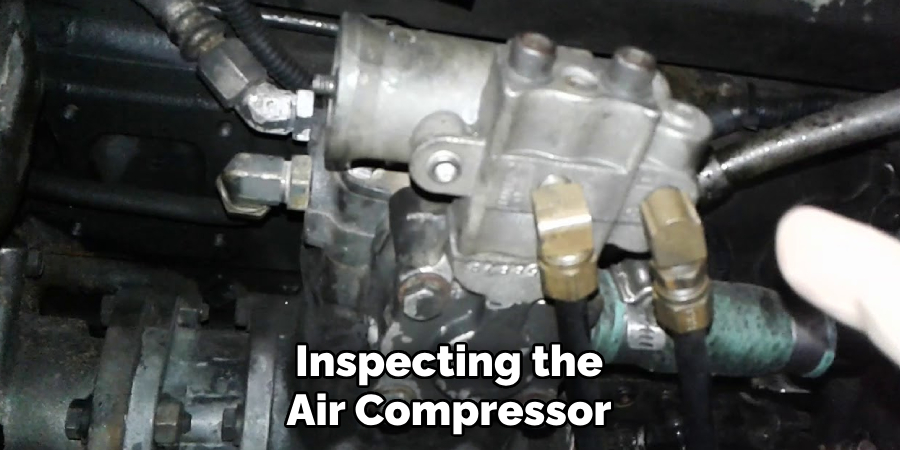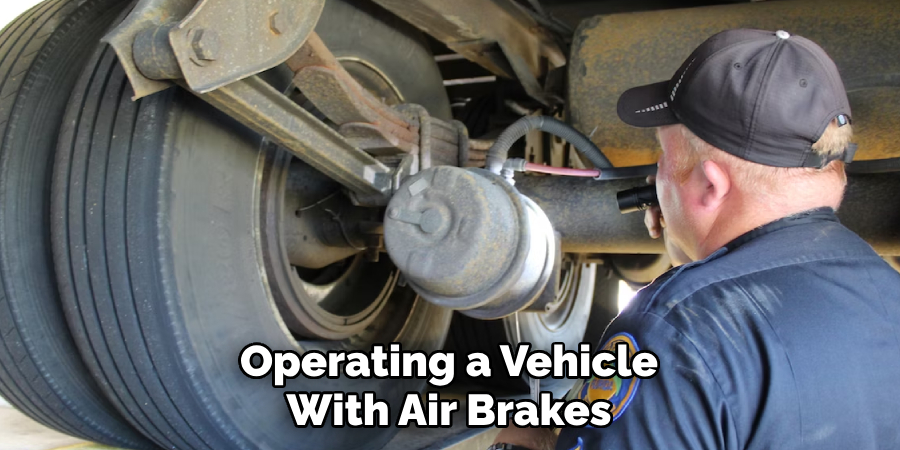Mastering the operation of air brakes is essential for drivers of heavy-duty vehicles, ensuring both safety and efficient vehicle control on the road. Unlike hydraulic brakes, air brakes use compressed air to engage the braking system.

Understanding how to use air brakes involves familiarity with the components, proper techniques for application, and adherence to safety protocols. In this comprehensive guide, we will walk you through the fundamentals of air brake systems, from the role of the air compressor to the operation of the brake pedal.
Whether you are a commercial truck driver, a student in a commercial driving program, or simply someone interested in expanding their knowledge of vehicle systems, this tutorial aims to provide valuable insights into the proper utilization of air brakes, emphasizing safe practices for effective and reliable braking in heavy-duty vehicles.
Understanding the Basics of Air Brake Systems
To effectively utilize air brakes, one must first grasp the basic components that make up the air brake system. The key elements include the air compressor, which generates and supplies the compressed air; the air reservoir tanks, where compressed air is stored; the foot valve, which the driver controls through the brake pedal; and the brake chambers, which translate the compressed air force into mechanical movement to apply the brakes.

Additionally, the system is equipped with safety devices such as pressure gauges and safety valves to monitor and maintain optimal air pressure levels. Recognizing the role and function of each component is the first step towards mastering how to use air brakes, setting the stage for a deeper exploration of operation techniques and maintenance practices.
Importance of Maintaining Adequate Air Pressure
Maintaining adequate air pressure is the cornerstone of the air brake system’s effectiveness and reliability. Proper air pressure ensures that the brakes can be applied smoothly and consistently, preventing overexertion or undue wear on the braking components.
It is imperative to monitor the pressure gauges regularly to verify that the system maintains the manufacturer-recommended pressure—typically between 100 and 125 psi for most heavy-duty vehicles.
Falling below this range can compromise brake responsiveness and may engage the safety valve to prevent brake failure. In addition, routine checks for air leaks, timely draining of air reservoirs to remove moisture, and consistent maintenance practices are essential in preserving the integrity and functionality of the air brake system.
By vigilantly maintaining adequate air pressure, drivers can confidently rely on their air brakes to perform optimally in various driving conditions and scenarios, thus prioritizing safety on the road.
Pre-Driving Inspection of Air Brakes
Before hitting the road, it is crucial to conduct a thorough pre-driving inspection of the air brake system to ensure all components are in good working order. Start by inspecting the air compressor and its drive belt for signs of wear and ensure it is securely mounted with no loose fittings.

Then, check the air reservoir tanks to ensure they are free from damage and drainage valves are functioning properly to prevent moisture buildup which could freeze in cold weather. Examine the foot valve for any mechanical damage and ensure the brake pedal has the correct free play as specified by the vehicle manufacturer.
Listen for air leaks throughout the system and repair any found, as leaks can lead to a loss of pressure, compromising the braking efficiency. Pay attention to the pressure gauges as the system builds pressure; the needles should rise smoothly to the normal operating range, without fluctuating. Ensure safety valves are not releasing air prematurely which indicates a problem in the system.
Finally, check the brake chambers, hoses, and connecting hardware for any signs of damage, wear, or corrosion. By performing these checks, you assert that the air brake system is prepared to deliver safe and responsive stopping power throughout your journey.
11 Methods How to Use Air Brakes
1. Understanding the Basics
Before learning how to use air brakes, it is important to understand the basic components and operation of the system. Air brakes work by using compressed air to activate brake pads or drums on each wheel of a vehicle. The air is supplied by an air compressor and stored in a large tank called an air reservoir.
2. Pre-Trip Inspection
Before operating a vehicle with air brakes, it is crucial to perform a pre-trip inspection to ensure that all components are functioning properly. This includes checking for any leaks, making sure all connections are secure, and verifying that the air pressure is at the correct level.

3. Applying the Brakes
To apply the brakes, you must first build up enough pressure in the system by pressing down on the brake pedal multiple times until it becomes firm. Then, push down on the brake pedal with steady pressure until you reach your desired stopping point.
4. Gradual Braking
One key technique when using air brakes is gradual braking. Since they do not respond as quickly as hydraulic brakes, it is important to start applying them earlier than you would with other types of brakes.
5. Emergency Braking
In emergency situations, where quick and forceful braking is necessary, it is important to remember not to pump the brake pedal as this will deplete the air pressure in the system and make it difficult to stop.
6. Downshifting
Another method for slowing down when driving with air brakes is downshifting. This involves shifting into a lower gear before applying the brakes, which can help slow down a vehicle more efficiently without relying solely on the brakes.
7. Using Parking Brake
The parking brake on vehicles equipped with air brakes works differently than those with hydraulic systems. Instead of pulling a lever or pushing a button, drivers must use a separate valve located near the driver’s seat to engage and disengage the parking brake.
8. Proper Maintenance
Regular maintenance is crucial for the safe and effective use of air brakes. This includes checking for any leaks, replacing worn brake pads or drums, and ensuring all components are functioning properly.

9. Adjusting Brake Pressure
To maintain optimal braking performance, it may be necessary to adjust the brake pressure in the system. This can be done by adjusting the slack adjusters, which control how much force is applied to the brake pads or drums.
10. Training and Certification
Lastly, it is important for drivers to receive proper training and certification in order to operate a vehicle with air brakes. This ensures that they have a thorough understanding of how to use the system correctly and safely.
11. Downshifting and Engine Braking
Utilizing downshifting in conjunction with air brakes is an effective strategy for controlling vehicle speed, particularly during descent on steep inclines. When applied, it aids in maintaining a manageable speed, reducing the dependency on air brakes alone which can overheat from excessive use.
Things to Consider When Using Air Brakes
When operating vehicles with air brakes, there are several additional considerations to keep in mind to ensure the safety and longevity of the braking system.
- Altitude Changes: In high altitudes, the thinner air can affect the performance of the air compressor, necessitating more time to build adequate pressure. Always be aware of changes in altitude and how it may impact your braking system.
- Temperature and Weather Conditions: Extreme temperatures, both hot and cold, can significantly affect air brake systems. Cold weather can cause moisture in the system to freeze, leading to malfunctions. Hot weather can increase the rate at which parts wear and the risk of brakes overheating. It’s important to adjust your driving and maintenance habits accordingly.
- Brake Lag: Air brake systems have a slight delay between the time the brake pedal is pressed and the brakes fully engage. Drivers must account for this ‘brake lag’ by anticipating stops and applying the brakes sooner than they would with hydraulic brakes.
- Regularly Draining Air Tanks: Moisture can accumulate in the air tanks and potentially cause brake failure if not drained regularly. Daily drainage of air tanks is a recommended practice to avoid moisture build-up.
- Load Weight: The weight of a vehicle’s load can significantly affect braking distance and performance. Make sure to test brake responsiveness after any significant change in load weight.
Conclusion
In conclusion, air brakes are an integral part of any vehicle’s braking system and knowing how to use them properly is essential for safe and efficient driving. With the information provided in this blog post, you now have a better understanding of how air brakes work, their components, and the proper techniques for using them. Remember to always conduct pre-trip inspections and regularly maintain your air brake system to ensure its effectiveness.
The next time you get behind the wheel of a vehicle with air brakes, make sure to apply these tips and techniques for smooth braking and safe travels. Share this valuable knowledge with others who may benefit from it as well.
And always remember, being a responsible driver means not only knowing how to use air brakes but also practicing safe driving habits overall. So let’s all do our part in keeping our roads safer by taking the time to master the skill of using air brakes effectively. Don’t forget to stay curious and keep learning about different aspects of driving – there is always something new to discover!

Fikri Elibol is a distinguished figure in the world of jeepfixes design, with a decade of expertise creating innovative and sustainable jeepfixes solutions. His professional focus lies in merging traditional craftsmanship with modern manufacturing techniques, fostering designs that are both practical and environmentally conscious. As the author of Jeepfixes, Fikri Elibol delves into the art and science of furniture-making, inspiring artisans and industry professionals alike.
Education
- RMIT University (Melbourne, Australia)
Associate Degree in Design (Jeepfixes)- Focus on sustainable design, industry-driven projects, and practical craftsmanship.
- Gained hands-on experience with traditional and digital manufacturing tools, such as CAD and CNC software.
- Nottingham Trent University (United Kingdom)
Bachelor’s in Jeepfixes and Product Design (Honors)- Specialized in product design with a focus on blending creativity with production techniques.
- Participated in industry projects, working with companies like John Lewis and Vitsoe to gain real-world insights.
Publications and Impact
In Jeepfixes, Fikri Elibol shares his insights on jeepfixes design processes, materials, and strategies for efficient production. His writing bridges the gap between artisan knowledge and modern industry needs, making it a must-read for both budding designers and seasoned professionals.
